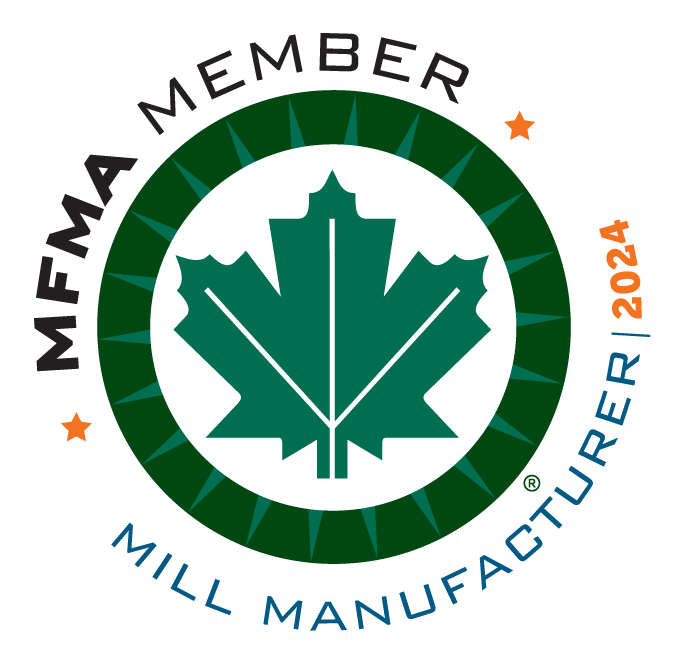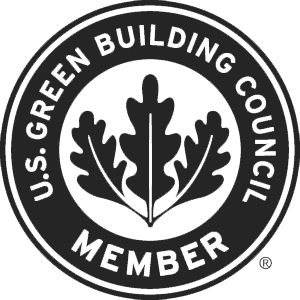The top layer of engineered flooring is made from real hardwood flooring. The top layer is commonly referred to as the wear layer, lamella or veneer. The hardwood species used for the top layer determines the species of the finished hardwood flooring.
There are 3 common ways to cut the top layer: Sawn, Sliced and Rotary-peeled. The method used plays a factor in the aesthetics or appearance of the veneer and has its own set of features and benefits.
To get a better understanding of each cut, let’s take a closer look at the 3 methods:
DRY-SAWN: The sawn veneer process begins with cut raw lumber. The lumber comes from logs that have been cut in a sawmill. Lumber is graded and sorted for maximum yield and usage. The wood is stacked and placed in a low humidity environment so it can dry. This keeps moisture inside the wood cells intact; therefore reducing the risk of cupping and delamination. The boards are then dry-sawn into the desired thicknesses. The process of cutting is similar to how solid flooring is cut.
Dry-sawn lumber generates sawdust which lowers the yield of usable wood and veneers than the other two methods. The dry-sawn method allows for the thickest wear layer.
A dry-sawn lamella identical in looks to solid flooring. Both possess the same color, grain and characteristics.
Dry-sawn is considered to be the highest quality of the 3 methods due to its thickness and aesthetic traits. With the higher quality comes a higher price tag making it also the most expensive method for cutting lamellas. This premium product delivers a veneer that looks and acts like solid hardwood flooring. It has the best visual appeal and the grain structure is strong due to the natural sawing process.
SLICED: Sliced veneers start out much the same way as dry-sawn veneers with logs being cut into lumber at the sawmill. The lumber is then put into a conditioning tub, which could be a steam bath, vat or pool of water. The amount of time the lumber remains in this conditioning tub varies by manufacturer. Regardless of time, this process softens the wood fibers making it more flexible and easier to cut.
After the wood has been prepared and removed from the tub, the lumber is sliced. It is run across an angled blade repeatedly to produce the lamellas. The process is similar to slicing cheese.
Slicing veneers does not produce any sawdust; therefore, creating more usable material. More material means a higher yield. The appearance of sliced veneers maintains the original look and finer graining of the wood.
Sliced veneers do have limitations. The veneers are not as thick as dry-sawn. This method can stress the wood fibers, resulting in lathe-checks.
ROTARY PEELED: Rotary-peeled veneers start out with wooden logs. They are placed in a conditioning tub to prepare the wood. From there the logs are positioned on a large wood lathe, or shaping machine. As the log spins against a sharp blade, long, thin layers are peeled off. Working from the outside in, the log spins against a sharp blade until the whole log is turned into a veneer. This technique produces very side and long strips. It creates the maximum amount of product from the wood, making it the cheapest method available.
Rotary-peeled veneer has a distinct, repeating grain pattern that is more pronounced than sliced or sawn. It has been likened to plywood-like grain. These veneers can have issues with cupping and warping as the material tries to revert back to its original shape.
This method has the best yield of material making it the least expensive. However, it’s appearance is the least like solid hardwood. It is also prone to have more performance issues than the other methods.
How the veneer is cut is just one of the ways that affect the look of engineered flooring. Species, sheen, stain color, width are just some of the other elements that directly impact the aesthetics.
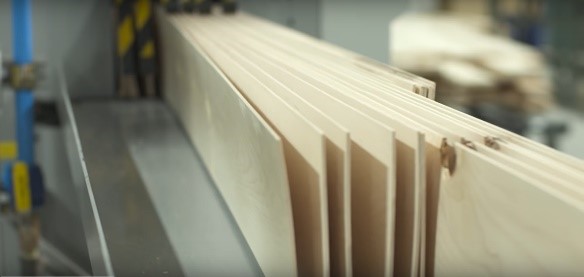
Dry Sawn 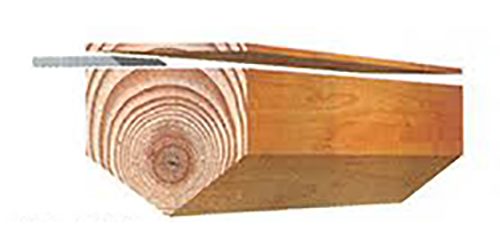
Sliced (photo from HPVA) 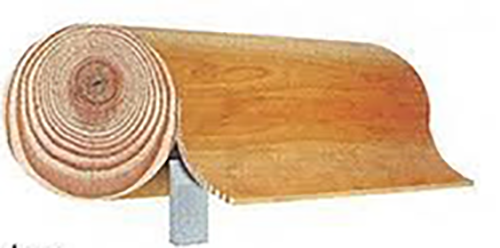
Rotary Peeled (photo from HPVA)

